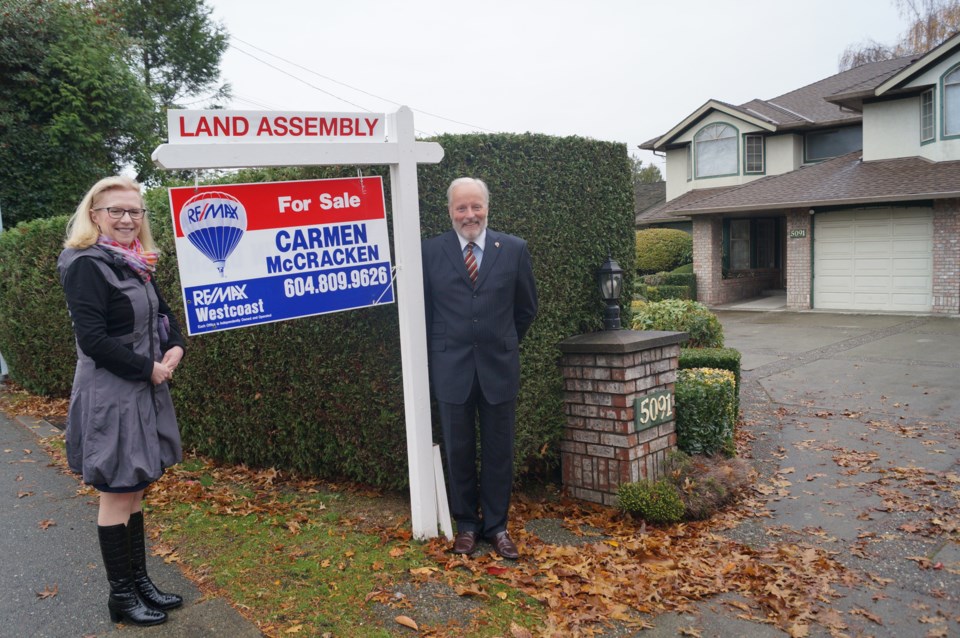Two long-time Richmond realtors say builders and developers are increasingly turning to townhouse construction along Richmond’s arterial roads.
“In many ways the townhouse is the new single-family home,” said realtor Martin Dash, who is, along with business partner Carmen McCracken, putting together a land assembly on Steveston Highway to market to a developer.
A land assembly occurs when neighbouring owners of single-family home properties, that are zoned for townhouses, decide to sell their lots collectively to a townhouse developer. Realtors such as Dash will often approach homeowners to bring awareness to such “opportunities.”
Their four-home land assembly is one of three on Steveston Highway, between Railway Avenue and No. 2 Road.
“Three or four years from now we’ll see a steady stream of townhouses between Railway and No.2,” said McCracken.
Because the City of Richmond recently amended its Official Community Plan to allow for more townhouse zones along these main roads, such opportunities are growing.
The townhouse is seen as a more affordable housing option on the open market, but land assemblies also raise the value of land.
“When you get a number of homes in a row that has potential for development, then the land value increases because the developer can build more homes,” explained Nash, who is trying to market the four homes at a premium price to a developer (a fourth homeowner has yet to agree to a price).
Nash and McCracken determine a value for the land assembly based on market trends. McCracken said they can calculate the allowed buildable square footage of an assembled lot, to estimate how many townhouse units can be built.
In such a hot and “fluid” market, McCracken and Dash said final sale prices of the single-family homes may not always reflect the final townhouse listing prices. That’s because land assemblies take longer to be finalized and townhouse developments also takes longer to build. Hence it may take two or three years to see construction finished from the time a land assembly deal is reached.
One large (deep) lot on Steveston Highway, next to O’Hares Gastropub sold for $2.4 million in November 2015 and is now being developed into nine townhomes that should, based on market trends, sell for more than one million dollars each.
Down the road, Anthem Properties has applied to build 43 townhouses on a site where 10 homes stand. The last posted sale date for those homes is a combined $22.7 million. Everyone has their price, seemingly, as most houses sold for about $1.75 million while one outlier went for nearly $7 million.
Coun. Linda McPhail said the city’s attempt to increase townhouse development was seen as a way to dissuade more large homes being built on arterial roads.
“When we made changes to the arterial road strategy it solidified where we wanted to see densification,” outside City Centre, said McPhail, chair of council’s planning committee.
At committee level, McPhail notes that councillors and city planners try to encourage land assemblies.
But if one homeowner holds out, that is their right.
She said larger land assemblies are occurring now.
Meanwhile, the City of Vancouver has updated its housing strategy to include more townhouse zoning in single-family home neighbourhoods (inside main roads).
McCracken said given the land constraints and housing demand in Richmond, rezoning some neighbourhoods could produce “more opportunities” for land assemblies.
But McPhail said council and staff have not broached the subject of building townhouses in neighbourhoods.
“Right now, we’re still committed to preserving single-family home neighbourhoods,” said McPhail.



